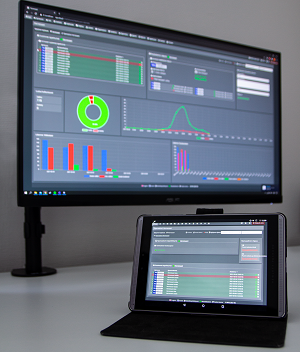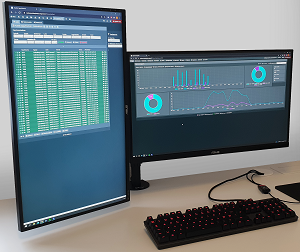Consider these 6 things when planning the automation of security systems and related operational processes
Various service platforms are available on the market for the automation of security systems and related operational processes, and for the more efficient utilization of the data generated by security systems.
I have looked at this using the list of six tips below.
1. Combining different security systems into one logical entity
At its best, the deployment of a service platform that supports automation does not in other respects require new system and / or device purchases but allows the utilization of data already produced by the existing system and device base. If you want to integrate new and existing systems and devices from different vendors into the same entity, the platform must comprehensively support two-way connections of systems and devices from different manufacturers to enable automation.

2. Automation and optimization of operational processes
Automating and optimizing operational processes begins with how automatic it is to connect different systems and devices to the service platform. If the retrieval of the system and device data during the connection phase is not automatic, it will significantly increase deployment costs and potential for human errors. For example, if you can automatically transfer to the platform the data from a single security or an automation system, and the thousands of sensors connected to it, it saves substantially time and, above all, reduces significantly deployment costs.
The operational and technical monitoring of all systems and devices connected to the platform must be real-time and automatic. Pay attention to how easily you can drill down to the sensor level when an event or hardware failure is automatically detected in a site. Clarity and visuality are key factors in monitoring many different systems, and also different sites in order to quickly manage the situation.
With automation, the maintenance costs of different systems and devices in different locations are reduced when the information needed there in different situations can be distributed in real time, and automatically to the right recipients. For example, the technical and installation information of the system or device that comes together with the automatic technical alarm notification ensures that the technical expert immediately has the right tools, such as a ladder or hoist, for the service work of the high-mounted equipment.
Regardless of the place and time, the service platform must be able to be used securely with different terminals, both mobile and browser.
3. Automatic and real-time situation awareness and operating instructions
In order to take a full advantage of the versatile connections, the service platform must provide the possibility to combine events and alarms from different systems and devices and intelligently form an action or actions based on them. The automatic linking of snapshot images and the synchronization of video recordings are also part of the real-time or later verification of the event.
For the maximum utilization of the automatic situation awareness it should be possible to implement an automatic sending of messages and operational instructions according to the routing rules that are based on different events. These targeted messages or, for example, SOPs (Standard Operating Procedures) relating to the event/situation, should be possible to send as well to mobile phone, email as to directly to the user interface.

4. Real-time BI reporting for decision making
If your company intends to use the data generated by the platform in different functions and organizational levels, check how flexibly the data from different sources, systems and devices, can be combined in reports, in real-time and automatically, how well individual and rich reports can be created and shared, and whether both real-time data and statistics are in use at the same time.
Real-time and historical data provide facts as a basis for operational development, and also for evaluating the results of development measures. With the help of the data, you can easily identify different “pain points”, both in operational and technical areas.
The automatic monitoring of the systems and devices combined with the BI reporting clearly indicates the usability of different systems and devices. A faulty system or device is always a risk, either operationally or financially. System and device specific health information is useful in risk management, planning development targets, managing the technical functionality and security of a building, and reviewing maintenance and service level responses.
The availability of BI reports is also important for users. Are the reports available securely 24/7 on different terminal devices? Ease of use significantly increases the utilization of the BI reports.
5. Information and usage management
The more widely the service platform is utilized at different levels of the organization for a process optimization, the more versatile and flexible the user management must be. It must be possible to group users in different ways, where one user can belong to different groups depending on, for example, the hierarchy and the location. At its best, the user's services can be defined individually, so that he or she has in use the optimal package of the platform services for his or her own work.
The user management of the service platform will be automated if it is possible to connect, for example, to Microsoft AD (LDAP interface). In this way, for example, a company's HR maintains personal information, which automatically controls an individual's possibilities to use the service platform.
The service platform must also meet the GDPR requirements regarding personal data. It must also provide logs and user-specific audit trail functions of the systems and devices connected to the platform.
6. Usage needs and requirements in constant change
The flexible service platform scales to different operating environments and their changes, while being a solution for a company's current and future needs. For example, geographical areas, sites, user levels and groups should be added flexibly as the company expands and the operating environment changes. The number of devices and systems to be connected should be equally scalable.
